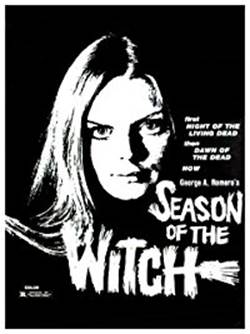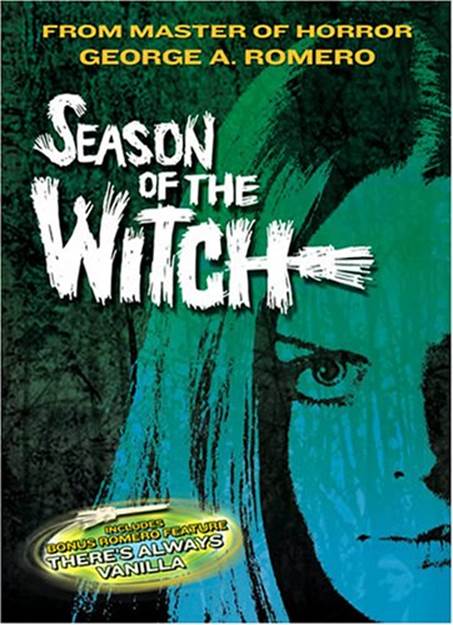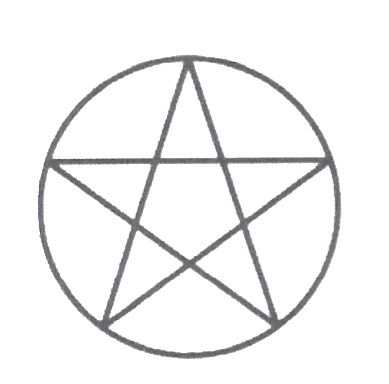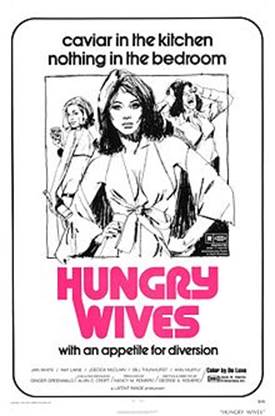Witchy Movies: George Romero's Season of the Witch (1972)
Horror movie legend George A. Romero (February 4, 1940 - July 16, 2017), creator of Night of the Living Dead (1968), died at age 77. Romero's first film was the independent horror film, Night of the Living Dead, and it remains the film for which he is most known.

|
Yet, Romero also created a little known gem, Season of the Witch in 1972, released in 1973. The title is from the 1966 rock song, "Season of the Witch," by Donovan on the album Sunshine Superman.
I have decided to honor Mr. Romero by discussing this film--which is often overlooked and misunderstood. I am also going to point out, in the film, some items of interest to Wiccans and Witches.
In 1973, Romero described the film as "not really" being a horror film, though it did involve the subject of the occult topically. Personally, I viewed it as a "psycho-drama" or "psychological drama"--with a bit of Witchcraft and issues concerning women in the 1970's. The plot moves slowly, and therefore the film is often described as being "talky."
|
|
Kitty Le Claw of Killer Kittens From Beyond The Grave: Season of the Witch [aka Hungry Wives, aka Jack's Wife] (1972) used the phrase, "a gripping-at-times melodrama" to describe the film. It could also be called a "psychological study."
The film is about an unhappy housewife, Joan Mitchell (Jan White), who is married to Jack Mitchell (Bill Thunhurst), a successful businessman. She also has a daughter in college. In truth, Joan is not just unhappy, she is depressed and struggling with personal anxiety. After 20-some years of marriage, Joan is now experiencing unpleasant dreams about being unimportant and disempowered in this stage of her life.
Through her social circle, Joan learns of a woman who just recently moved into the area, Sylvia (Esther Lapidus), a Witch who reads tarot by appointment for a donation. Sylvia is the leader of a Witches’ coven, but she originally learned the Craft from her mother. After a Tarot session for one of Joan's friends, Sylvia explains:
|

|
“It’s a religion, really. My mother was a Witch--and my father belonged--so it was really quite simple for me. In today’s age, when anything goes, a lot of people are beginning to take it seriously. When I was a child, I was taught certain recipes and incantations, and then I was sworn to secrecy. Well, today, I could just go down to the bookstore and find a paperback primer for Witches.”
Indeed, Joan had already spied a book on a shelf titled, “To Be a Witch, A Primer.” After glancing through the book, she acquires a copy for herself. She is intrigued enough by Witchcraft to experiment with the information in the book. Later, Joan finds herself haunted--in increasingly terrifying nightmares--by a male figure in a foliate mask. This male figure attacks Joan, and in different dreams she struggles to escape and protect herself. (One reviewer, Scott Ashim of 1000 Misspent Hours, dismissively called the foliate mask a “rubber Halloween mask.” Indeed, the mask is obviously made of rubber. It is simply a low budget special effect for the surreal dream scenes, but I will discuss the foliate mask more later.)
 |
Of interest to Wiccans and Witches, there is no book, “To Be a Witch, A Primer.” Like the “Necronomicon,” the book, “To Be a Witch, A Primer,” was created as a fictional “prop” for this movie.
|
Yet, some of the material that Joan reads and experiments with in film has clearly been taken from Paul Huson’s book Mastering Witchraft, A Practical Guide For Witches, Warlocks And Covens, 1970--particularly pieces of rituals that are almost verbatim from his book.
 |
Jason Mankey's The Witches Book of Shadows (2017) provided an excellent perspective about Huson's book: "The first book to contain full-length rituals resembling those in modern Witchcraft was Paul Huson's Mastering Witchraft, A Practical Guide For Witches, Warlocks And Covens. Huson's book is a long way from being a BoS, and many of his spells and formulations feel closer to ceremonial magick than Witchcraft..." (p. 151)
|
Paul Huson wrote on his webpage:
MASTERING WITCHCRAFT was my first book. I wrote it in 1969 as a hands-on guide for the would-be witch or warlock. …MASTERING WITCHCRAFT eschews the usual Wiccan ethics, although it does share some common ground with Wiccan subject matter, as I drew from many of the same sources in the Folklore Library at University College London that Gerald Gardner did.
Huson gathered his material for Mastering Witchcraft from numerous genuine historical and folklore sources in Europe and the British Isles. Thus, his book contained some material that your average Wiccan would not use. For example, Huson’s book suggested dedicating one’s self to the practice of magic with “a symbolic gesture” by reciting the “Lord's Prayer backwards” in Latin. Historically, reciting the Lord’s Prayer backwards is a practice to which those accused of the crime of witchcraft frequently confessed.
On his webpage, Huson also wrote about Mastering Witchcraft, "It was not a 'Wiccan' handbook." Indeed, Wiccans do not recite the Lord's Prayer backwards.
Mastering Witchraft also contained directions and sigils for conjuring a Solomonic spirit, Vassago, who is described by an anonymous 17th century grimoire as being “of a good nature.”
 |
Of interest to Witches and Wiccans, Kitty Le Claw of Killer Kittens referred to the Solomonic spirit as "the god Virago." Actually, the way the name of this spirit is pronounced by Joan does sound like Virago. I wonder if this pronunciation was used at someone's advice?
|
 |
Sophia diGregorio in Traditional Witch’s Review of the 1973 George Romero Movie, “Season of the Witch,” aka. “Hungry Wives” and “Jack’s Wife,” 2013 (?) also noticed Vassago had been “re-named for the purposes of the movie.” Sophia diGregorio speculated that Joan conjured this spirit to increase her own power, explaining: “The word ‘virago’ means a strong, brave or war-like, Amazon woman.” Nevertheless, the sigil in the movie resembles Vassago's sigil.
|
In any case, Joan experiments with the very same magical practices mentioned in Mastering Witchcraft. There is a scene in the movie, for example, in which Joan is copying the Lord's Prayer from a KJV bible, then reciting the English words in reverse order.
 |
Sophia diGregorio also wrote, “It is only fair to point out to those only familiar with modern Wicca that the witchcraft represented in Huson’s book and in 'Season of the Witch' is not Wicca."
|
Romero seems to have been aware of a spiritual aspect of the 1970’s Feminist movement, which also influenced his script. Later in the film, Joan returns to speak to Sylvia.
I tend to think Romero ran into some real Witches in the 1970's before making this film, because of the discussion between Joan and Sylvia.
In the 1970's, some Witches were cautious about letting just anyone walk in and attend coven rituals.
Sylvia responds to Joan's desire to become more involved in Witchcraft, saying that it's possible Joan could be taught. Yet, Sylvia also explains that Witchcraft is not like it is on TV. She also warns Joan about "playing with it."
The movie was originally filmed under the title Jack's Wife, but the film was first distributed with the title, Hungry Wives. The tag line for the movie poster for Hungry Wives, was:
Caviar in the kitchen,
nothing in the bedroom,
HUNGRY WIVES,
with an appetite for diversion.
That was a huge mistake--especially because the distributer was attempting to sell the film as something it wasn’t--“soft core porn.” While it is true that Joan experiments with a manipulative domination (lust/love) spell, prior to inviting a younger man over for extra marital sex, the movie just does not have any “pornographic action”--and so the film reached entirely the wrong audience.

 |
Of interest to Witches and Wiccans, Joan also got the domination (lust/love) spell out of “To Be a Witch, A Primer.” It is a rather old spell, and versions of it can be found in a number of sources about historical magic and witchcraft. A version of it is also found in Huson’s Mastering Witchcraft. Joan’s conjuration under the moon asks that the sundry spirits named "obsess and torment the body, spirit, soul, and five senses of the mortal named Gregory Williamson....That he come to me tonight, and that he accomplish my will."
|
As I said, this conjuration under the moon is an old spell, plucked from history. Not all such spells are sweetness and light.
After Romero's 1978 success of Dawn of the Dead, his 1972 film about Feminism and Witchcraft was re-released under the title, Season of the Witch, due to a scene in which Joan shops for witchy tools while Donovan’s song plays. The film eventually was also released under that title on VHS and DVD. (It was in the 1980’s that I discovered the movie on VHS.)
Kitty Le Claw of Killer Kittens stated that “…it [the movie] was finally re-released by Anchor Bay Entertainment in 2005." Kitty Le Claw also described the film as “…a gripping-at-times melodrama that serves as a poignant metaphor for the life of a typical, middle-aged woman in the early 1970s.”
Kitty Le Claw also mentioned a bonus on the DVD from Anchor Bay Entertainment, “Ms. White provides an extensive interview within the bonus features of the DVD, which serves as a great viewing companion for the film.” True, I had not seen this wonderful interview with Jan White before--on either VHS or DVD.

|
The most recent release by Anchor Bay contains some
lost footage and some extras. On side A is a video
interview with Jan White (now called Janina: "Season
Of The Witch: The Secret Life Of Jack's Wife." Side A
also contains the original trailer under the title
Hungry Wives and the re-release trailer as Season
of the Witch. There is also another Romero movie
on side B: There's Always Vanilla. This DVD is
available from Amazon.
|
Season of the Witch is not--in my opinion--a bad title;
however, the best title for the film was the title it was filmed under, Jack's Wife. That title refers to the fact that the heroine, Joan, is “Jack’s wife” because she is married to “Jack Mitchell”--and originally in this movie her identity is primarily "Mrs. Mitchell" OR "Jack's wife."
Yet, the movie’s title, Jack's Wife, also subtly refers to the film’s male figure in a foliate mask. So, WHO is that man in the foliate mask? The Green Man.
 |
The Green Man is an artistic motif--represented by a male face/mask surrounded by or made from leaves--a “foliate mask.” The Green Man has been linked to another figure, Jack in the Green (Jack i' the Green/Jack-in-the-green/Jack o' the Green, etc.) that is found in traditional English May Day parades and other May celebrations.
|
In some forms of modern Neo-Pagan Witchcraft, the Green Man--or Jack in the Green--is seen as a representation of the Witches’ God. Jack in the Green is the vegetation spirit that dies in the seasonal cycle of life and death.
I don’t want to give away the whole plot--like so many write-ups about this movie do--but I will quote Kitty Le Claw in Killer Kittens:
No longer defined solely as Jack's wife, Joan returns to her old social circle with a renewed sense of purpose and vitality. In the final moments of the film, Jan White delivers a powerful line in which she admits to one of the ladies at the party, "I am a Witch."
It is clear Joan no longer feels disempowered.
By the way, I will take a moment to discuss what I have read in some write–ups about this movie. CBS News said, “Romero wrote and directed ‘Jack's Wife,’ about a suburban housewife who gets mixed up with Satanism.” No, CBS--the movie DOES NOT involve “Satanism.” The Witches are not devil-worshippers. A while back, I also read a plot summary that wrote that the intruder attacking Joan wore a “Satanic mask.” No--a “foliate mask” is NOT satanic.
As a movie fan, I sought to contact George Romero via s-mail, asking him for more information related to the sources of his ideas involving Season of the Witch, aka Jack’s Wife. I never succeeded. Alas, that opportunity has now passed away forever.
Good-bye, Mr. Romero. I enjoyed MANY of your films. Thank you. May light perpetual shine upon you, and may rest eternal be granted to you--as your characters live on in film, and your zombies continue shambling.
 |
One last item of interest to Wiccans and Witches, I have already mentioned the scene with Donovan’s song, “Season of the Witch.” It is one of the most delightful scenes in the movie--mostly because of the unusual herbs in the spice shop, and other items at an antique store, in which Joan tracks down tools and supplies.
|
I really do like this film. However, I will offer some warnings to people who do not share my particular preferences in movies.
WARNING: There's more than one cut of this movie floating around. SOME cuts are better than others. Anchor Bay's most recent release has the most complete version. I provide this link because it allows folks to watch one version for free on Youtube:
You Tube: Season Of The Witch - George A Romero - 1973
WARNING to Romero zombie fans: If you primarily watch movies for intense horror, gore, and monsters like flesh eating zombies, Season of the Witch has NONE of that.
WARNING to Wiccans/Neo-Pagans/Witches: If you don't like scary scenes, tense psychological drama, or ambivelent endings, you probably will not like this movie. If you prefer musicals, like The Wizard of Oz (1939) and Bednobs and Broomsticks (1971), with everyone happy and well at the end, I guarantee you will not like this movie. If you prefer comedies, like I Married a Witch (1942), and Bell, Book and Candle (1958), this film not amusing or romantic.
Copyright July 2017 Myth Woodling
Sources:
Kitty Le Claw,
Killer Kittens From Beyond The Grave: Season of the Witch [aka Hungry Wives, aka Jack's Wife] (1972), Jul 3, 2008, accessed 7/17/2017.
Scott Ashim,
Season of the Witch - 1000 Misspent Hours, 2003, accessed 7/17/2017.
CBS News.com, "Season of the Witch" (1972) - The horror films of George A. Romero, 2017, accessed 7/17/2017.
Sophia diGregorio, Traditional Witch’s Review of the 1973 George Romero Movie, “Season of the Witch,” aka. “Hungry Wives” and “Jack’s Wife”, 2013 (?), accessed 7/17/2017.
George R. Reis,
Season of the Witch/There's Always Vanilla - DVD Drive-In!
, accessed 7/17/2017.
Paul Huson, Matering Witchcraft, A Practical Guide for Witches, Warlocks, and Covens, 1970.
Paul Huson's webpage: http://www.paulhuson.com/, accessed 7/17/2017.
Witchy Movies
"Yet Another Wicca..." home page



